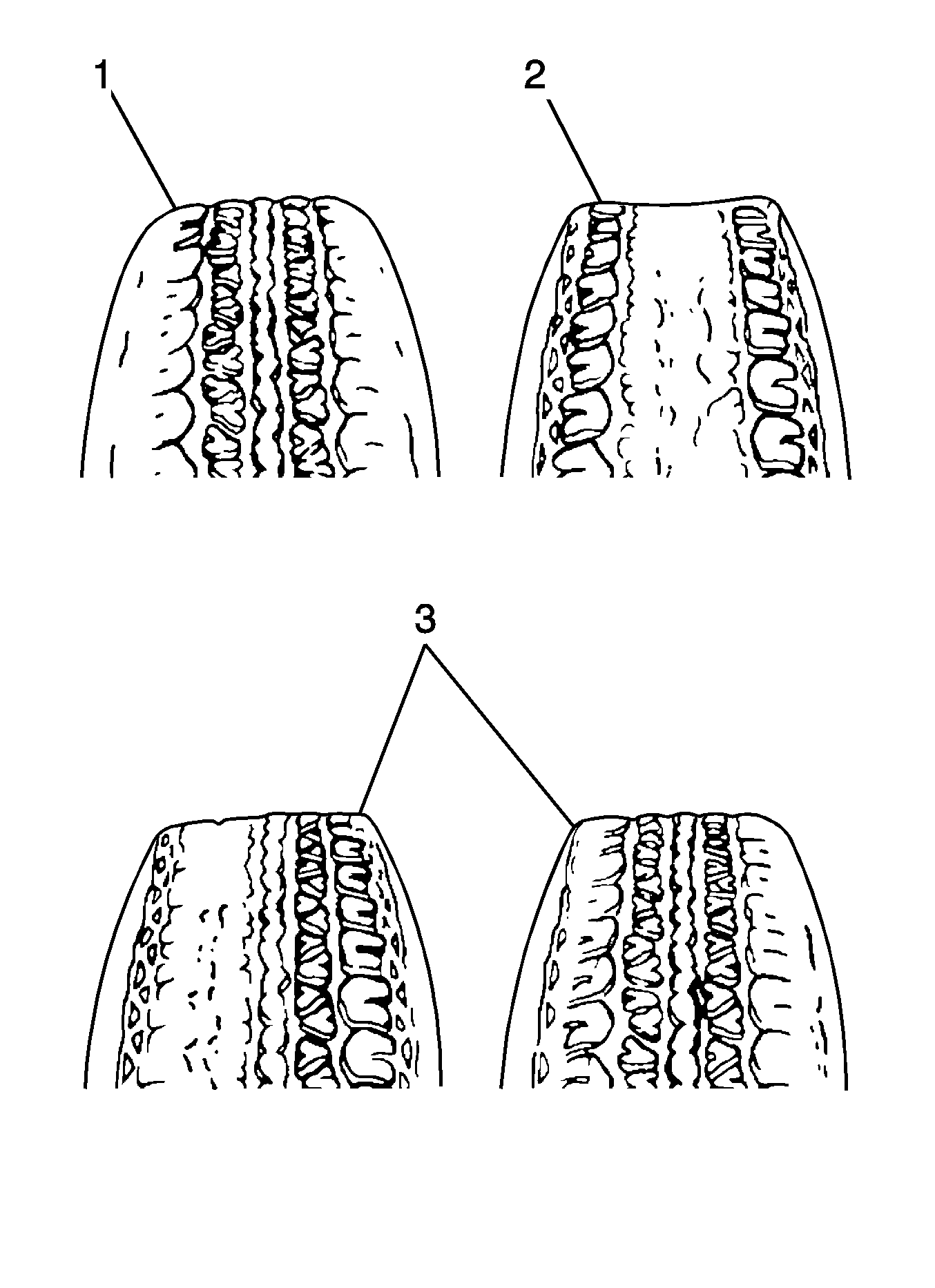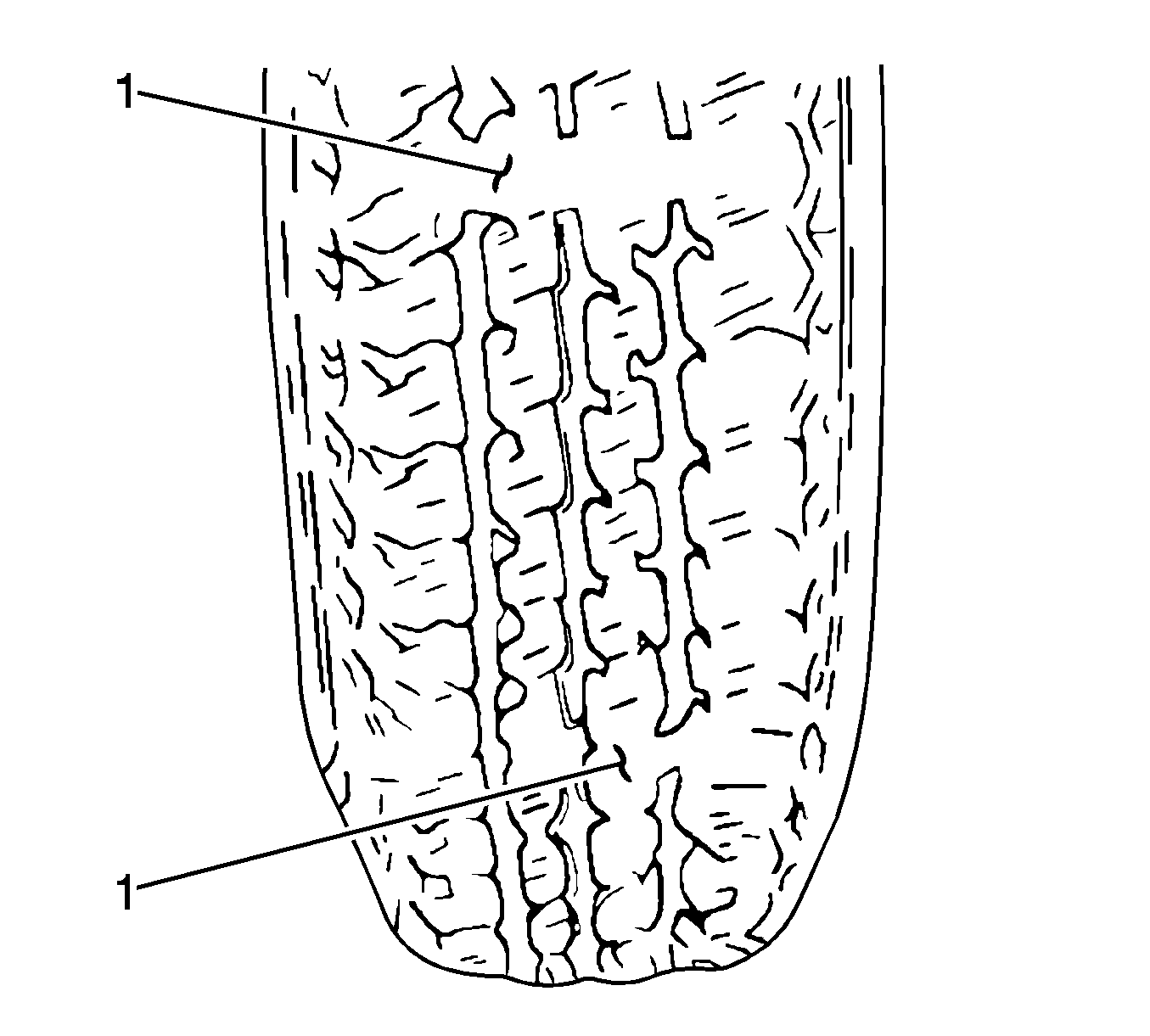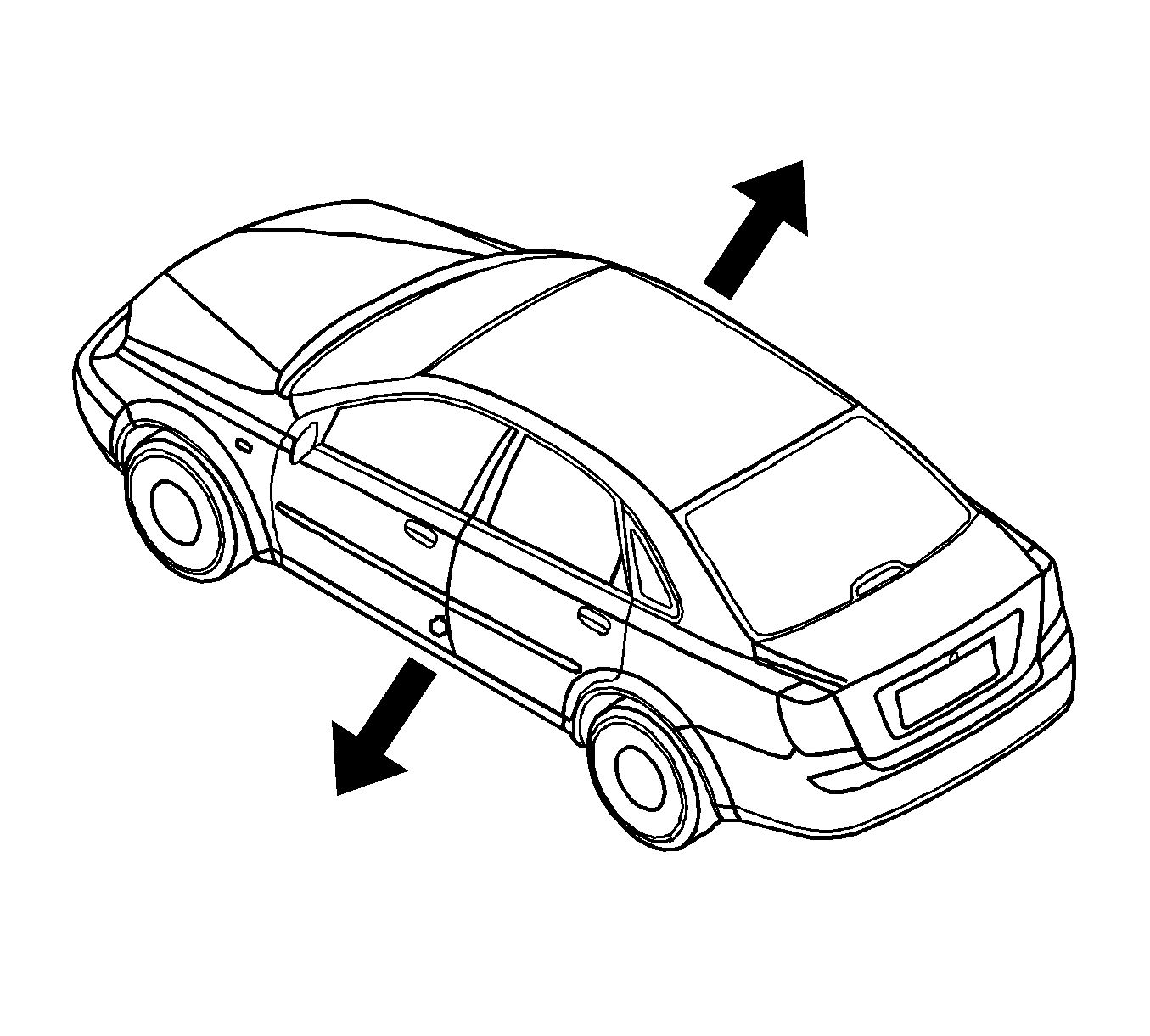
- Hard Cornering, under inflation or lack of rotation.
- Heavy acceleration on drive axle, excessive toe on drive axle
- Excessive toe on the non-drive axle or lack of rotation.
Irregular and premature tire wear has many causes. Some of them are incorrect inflation pressures, lack of regular rotation (1), poor driving habits (2,3), or improper wheel alignment. If the wheel alignment is reset because of tire wear,
always reset the toe as close to 0 degrees as the specification allows.
Rotate the tires when any of the following conditions are present:
| • | The front tire wear is different from the rear tire wear. |
| • | The left and right front tire wear is unequal. |
| • | The left and right rear tire wear is unequal. |
Check wheel alignment when any of the following conditions are present:
| • | The left and right front tire wear is unequal. |
| • | The wear is uneven across the tread of either front tire. |
| • | The front tire treads are scuffed with feather edges on the side of the tread ribs or blocks. |
Tread Wear Indicators

The original equipment tires have built-in tread wear indicators (1) to show when the tires need replacement. These indicators appear as bands when the tire tread depth becomes shallow. Tire replacement is recommended when the indicators appear
in 3 or more grooves at 6 locations.
Radial Tire Waddle

Waddle is side-to-side movement at the front or rear of the vehicle. It is caused by the steel belt not being straight within the tire, or by excessive lateral runout of the tire or wheel. It is most noticeable at low speeds, 8-48 km/h (5-30 mph),
but may appear as ride roughness at 80-113 km/h (50-70 mph).
The vehicle must be road tested to determine which end of the vehicle has the faulty tire. The rear end of the vehicle will shake from side to side or waddle if the waddle tire is on the rear of the vehicle. From the driver seat, it feels as though someone
is pushing on the side of the vehicle. If the faulty tire is on the front of the vehicle, the waddle is more visual. The front sheet metal appears to be moving back and forth, and the driver seat feels like the pivot point in the vehicle.
Waddle can be diagnosed using the method of substituting known good tire and wheel assemblies on the problem vehicle.
- Road test the vehicle to determine if the waddle is coming from the front or the rear of the vehicle.
- Install good tires and wheels from a similar vehicle in place of those on the offending end of the problem vehicle. If the source of the waddle is not obvious, change the rear tires.
- Road test the vehicle. If there is improvement, install the original tires to find the offending tire. If there is no improvement, install good tires in place of all four offending tires.
- Install original tires one at a time to find the offending tire.
Measure wheel runout with an accurate dial indicator. Measurements may be taken with the wheels either on or off the vehicle, using an accurate mounting surface such as a wheel balancer. Measurements may be taken with or without the tire mounted on the
wheel.
Measure radial runout and lateral runout on both the inboard and the outboard rim flanges. With the dial indicator firmly seated next to the wheel and tire assembly, slowly rotate the wheel one revolution and record the indicator reading. If any measurement
exceeds the following specifications and there is a vibration that wheel balancing will not correct, replace the wheel. Disregard any indicator readings due to welds, paint runs, or scratches.
Steel Wheels
| • | Radial runout (2, 6): 0.8 mm (0.03 in) |
| • | Lateral runout (5): 1.0 mm (0.04 in) |
Alloy Wheels
| • | Radial runout: 0.25 mm (0.01 in) |
| • | Lateral runout: 0.25 mm (0.01 in) |
Measure free radial runout (2) on the center of the tire tread. The tread can be taped to present a smooth surface. Measure free lateral runout (3) on the outboard side (4) not the inboard side (1) of the tire nearest to the tread.





